
Your favorite read aloud read by your favorite actors.
- Subject:
- Early Childhood Development
- Education
- English Language Arts
- Material Type:
- Reading
- Author:
- Screen Actors Guild
- Date Added:
- 03/13/2020

Your favorite read aloud read by your favorite actors.
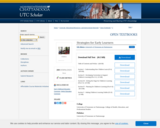
Welcome to learning about how to effectively plan curriculum for young children. This textbook will address: • Developing curriculum through the planning cycle • Theories that inform what we know about how children learn and the best ways for teachers to support learning • The three components of developmentally appropriate practice • Importance and value of play and intentional teaching • Different models of curriculum • Process of lesson planning (documenting planned experiences for children) • Physical, temporal, and social environments that set the stage for children’s learning • Appropriate guidance techniques to support children’s behaviors as the self-regulation abilities mature. • Planning for preschool-aged children in specific domains including o Physical development o Language and literacy o Math o Science o Creative (the visual and performing arts) o Diversity (social science and history) o Health and safety • Making children’s learning visible through documentation and assessment
Acknowledgements
This book is a work in progress. My goal is to adapt an open textbook on strategies for young learners for students in the state of Tennessee. This book began as a remix of the open textbook Introduction to Curriculum for Early Childhood Education (2018) by Jennifer Paris, Kristin Beeve, and Clint Springer of the College of the Canyons. This text forms the primary “skeleton” that this text was organized by, although this had to be modified to fit with state of Tennessee early learning developmental standards. The open textbook Introduction to Curriculum for Early Childhood Education (2018) is freely available here: https://drive.google.com/drive/folders/11An_WtG1dioTbe6bSXdGquADVjYT91Ha and here: https://www.open.umn.edu/opentextbooks/textbooks/introduction-to-curriculum-for-early-childhood-education I have sought to make this text consistent with the State of Tennessee Early Learning Developmental Standards, available here: https://www.tn.gov/education/instruction/academic-standards/early-learning-development-standards.html In addition to my original content this textbook uses open source content. My goal is to give credit and proper citation to any material used in this text.
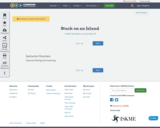
Improve thinking and reasoning
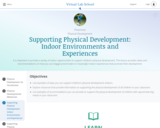
It is important to provide a variety of indoor opportunities to support children’s physical development. This lesson describes how you can engage preschoolers in meaningful indoor experiences that promote development.

The Office of Head Start contracted to create the Early Childhood Learning & Knowledge Center as a repository to support all Head Start Program Guidelines. In this section, four briefs support Head Start programs and other early learning partners, including school districts, to create smooth transitions for children and families. Each brief focuses on a level of the transition: children and families, early educators (teachers, family child care owners, assistant teachers or paraeducators), early childhood education partners (school districts, state preschool, centers, and homes), or programs/ policies/ practices (alignment, tools).
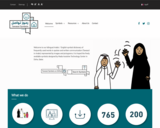
Tawasol symbols represent a symbol dictionary of frequently used words in spoken and written Arabic communication. The symbols are represented by images and pictograms.
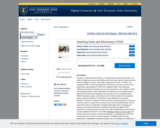
This Open Access Educational textbook, "Teaching Early and Elementary STEM", was written to support pre-service early childhood and elementary teachers in their journey to become facilitators of science, technology, engineering, and math, or “STEM,” and "integrated STEM" in their future classrooms. Students who read and use this text will deepen their understanding of “STEM” and “integrated STEM,” learn what early childhood and elementary students need to know and be able to do in relation to STEM, and understand ways to create activity plans and implement current research-based approaches to teaching and pedagogy. This text arose out of our Early/Elementary STEM Collaboration project, which started in 2017 with the intention of increasing the quality of teacher preparation in STEM across early childhood and elementary education. The team is composed of math and science education professors, classroom in-service teachers, and pre-service teachers in pre-school through fifth grade. We are driven by the values of collaboration, strengths-based approaches to teaching and learning, constructivist philosophy of teaching and learning, and applied STEM experiences to increase access and equity. Our model of preparing pre-service teachers has been published elsewhere in more detail (Robertson, Nivens, & Lange, 2019). We built this open access product to include the following: 1) completely new content that includes input from our team as well as examples of integrated STEM learning experiences; 2) adaptations of existing resources, and; 3) compilations of existing free resources (e.g., Next Generation Science Standards).

Teaching Strategies is also developing free resources through Ready Rosie™ that will include interviews with experts on how families can stay healthy and safe, how to support children’s emotional well-being during the pandemic, and some fun activities families can do at home that support learning and overall well-being. More information on these resources will be shared with you this week.
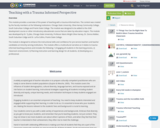
This module provides a overview of the power of teaching with a trauma-informed lens. The content was created by the faculty members at the following institutions: Chicago State University, Olive-Harvey Community College, South Subrurban College and Prairie State College. The module was designed to be added to the child development course or other introdcutory educationals course that are taken by education majors. The module was developed by Dr. Ty Jiles, Chicago State University, Professor Mario Wright Olive Harvey, Dr. Donna Walker, South Suburban Collge and Dr. LaTia Collins, Prairie State College. The module is designed to enhance the instructional skills and confidence for pre-service teachers and teacher candidates at minority-serving institutions. The module offers a multicultural narrative as it relates to trauma-informed teaching practices and includes the following: 1) Engaging all students in the learning process, 2) Classroom environment, 3) Planning instruction and learning design for all students, 4) Developing as a professional.

This module provides a overview of the power of teaching with a trauma-informed lens. The content was created by the faculty members at the following institutions: Chicago State University, Olive-Harvey Community College, South Subrurban College and Prairie State College. The module was designed to be added to the child development course or other introdcutory educationals course that are taken by education majors. The module was developed by Dr. Ty Jiles, Chicago State University, Professor Mario Wright Olive Harvey, Dr. Donna Walker, South Suburban Collge and Dr. LaTia Collins, Prairie State College. The module is designed to enhance the instructional skills and confidence for pre-service teachers and teacher candidates at minority-serving institutions. The module offers a multicultural narrative as it relates to trauma-informed teaching practices and includes the following: 1) Engaging all students in the learning process, 2) Classroom environment, 3) Planning instruction and learning design for all students, 4) Developing as a professional.
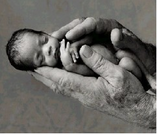
This is a handout which includes an assignment based on the topic of teratogen's exposure during pregnancy. This information has the purpose to create awareness to a pregnant woman about the harm her baby is experiencing in the womb when exposed to toxic substances. The letter is written from the baby's experience. Through this assignment, students will give voice to an unborn baby. They will assess two students' letters by completing two peer reviews
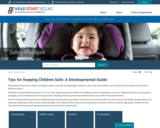
During the first five years, children constantly acquire new skills and knowledge. Caregivers who know what children can do and how they can get hurt can protect them from injury.1
All children develop differently. Staff individualize their approach because "children have different rates of development as well as individual interests, temperaments, languages, cultural backgrounds and learning styles." Ongoing child assessment helps staff determine each child’s developmental level.
This tool provides safety tips for early childhood staff working with young children in classroom environments. Each section includes a description of development and safety tips organized by daily routines. Some tips apply to all children. Others address the developmental needs of children in a specific age group. If children in your classroom fit more than one developmental level, review the safety tips for each.
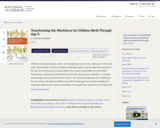
Children are already learning at birth, and they develop and learn at a rapid pace in their early years. This provides a critical foundation for lifelong progress, and the adults who provide for the care and the education of young children bear a great responsibility for their health, development, and learning. Despite the fact that they share the same objective – to nurture young children and secure their future success – the various practitioners who contribute to the care and the education of children from birth through age 8 are not acknowledged as a workforce unified by the common knowledge and competencies needed to do their jobs well.
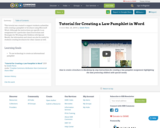
This tutorial was created to support students unfamiliar with creating a pamphlet or brochure using Microsoft Word. Although the instructions are specific to an assignment for a particular class (Curriculum and Strategies for Working with Children with Special Needs), the information and visual can also be useful for students creating brochures for other classes as well.
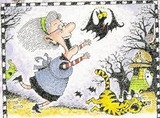
In this lesson the teacher will read the book called "There was an old lady who swallowed a bat" by Lucille. During the reading, the students will conduct an activity allowing them to follow along with the reading. Doing this by sticking the characters throughout the book into the old ladys stomach posterboard.

This Open Educational Resource (OER) is designed for young children, particularly those in kindergarten and early elementary school, to help them understand and manage feelings of anger. The resource provides simple explanations, relatable examples, and practical strategies to teach kids how to handle anger positively. It is enhanced with supporting materials, including videos, images, and documents, to engage young learners and reinforce key concepts.
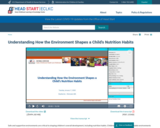
Safe and supportive environments are critical to shaping children's overall development, including nutrition habits. Children living in unsafe or unstable environments that don't support healthy eating, physical activity, or adequate sleep may experience poorer health outcomes, affecting their ability to be ready for school. Learn about the environmental factors that impact children's health. Find out how programs can tailor health services to help children build better nutrition habits and experience improved health.
Note: The survey and certificate mentioned were only available to participants of the live webinar.

The OER "Understanding Tolerance: Empathy and Positive Attitude" is designed for children aged 4-10 to teach them the importance of tolerance through empathy and maintaining a positive attitude. This resource helps young learners understand and respect differences, fostering a kind and inclusive environment. It includes engaging activities such as storytelling with "The Invisible Boy" by Trudy Ludwig, role-playing scenarios to practice empathy, and creating gratitude journals and positive affirmations to build a positive outlook. Additionally, it provides practical examples and craft projects like a "Tolerance Tree" to encourage daily acts of kindness. The OER also offers printable activity sheets and resources for parents and teachers to support continuous learning at home and in the classroom. The framework is supported by materials from Learning for Justice and Charity For Change, ensuring a comprehensive and research-backed approach to teaching these essential life skills.

This educational resource aims to help children aged 4-10 understand and recognize discrimination. Discrimination is when people are treated unfairly because they are different in some way. The resource focuses on three main types of discrimination that children might encounter: race, gender, and disability. Through engaging videos, stories, and activities, children will learn about the importance of inclusivity, empathy, and fairness. By understanding these concepts, children can promote a kind and inclusive environment in their daily interactions. This resource includes practical examples, solutions, and interactive activities to reinforce these lessons.

Word Count: 100939
ISBN: 978-1-998755-52-3
(Note: This resource's metadata has been created automatically by reformatting and/or combining the information that the author initially provided as part of a bulk import process.)